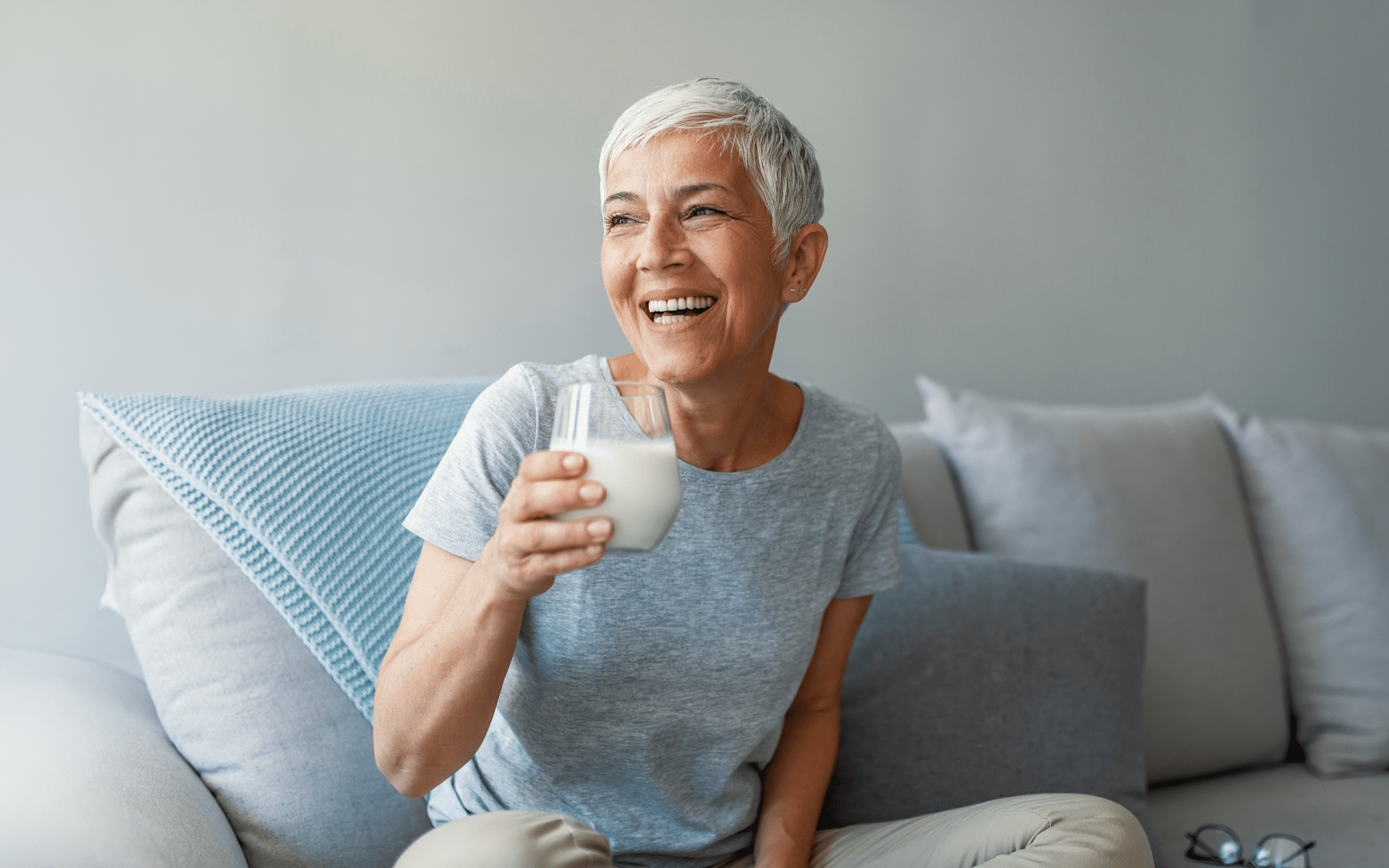It’s impossible to prevent the process of aging. Yet, as long as you eat a balanced diet and engage in various sports when you’re young, you increase your chances of being a stronger and more independent older person.
Of course, aging depends on many other factors besides food and athletics, but let’s face it: Your nutrients and exercise create the foundation for being physically strong and feeling good.
Wrinkles are fine and won’t interfere with your daily routine as much as weak leg muscles.
Mobility is one of the biggest concerns among seniors.
This review is for anyone who:
- Wants to prevent overall body weakness
- Suffers from muscle pain and weakness
- Ready to make health and wellness changes.
You will discover what to eat for weak legs and unlock simple exercises for seniors who desire to regain strength in their leg muscles and perform daily activities more freely.
What Causes Leg Weakness In The Elderly?
Muscle weakness in the entire body, including the legs, is typical for every aging individual. Medically, this is known as sarcopenia (1).
Yet, what causes sudden leg weakness in elderly? This question may have several possible answers.
The most common causes of leg weakness among seniors could be:
- Age-related muscle loss. It’s when a person gradually loses muscle mass and strength in their 30s and 40s.
- Chronic health conditions. Arthritis, osteoporosis, and neurological disorders can lead to muscle weakness in seniors.
- Medications. Certain medications can cause muscle weakness as a side effect.
- Sedentary lifestyle. When a person spends most of the time sitting or lying in bed.
- Reduction in hormone levels.
- The decline in nerve cells sends messages from your brain to your muscles, telling them to move.
- Insulin resistance.
- Being overweight (1).
Can Elderly Regain Leg Strength?
Seniors can improve their conditions with a balanced diet and simple, low-impact exercises. Sudden weak legs in elderly individuals can be scary but manageable.
Along with a healthcare provider, a senior can slowly but effectively regain leg strength.
Seniors must start with simple exercises and perform them consistently.
One study demonstrates that lower limb resistance exercise could improve muscle strength, physical fitness, and metabolism in pre-frail seniors (2).
You must consistently incorporate proper rest days since your muscles need time to recover. The recovery process depends on the senior’s condition: some may require a few days, weeks, or months to regain strength and train again.
Gentle chair yoga for beginners and seniors is a perfect low-intensity exercise for leg strength. Most seniors can do this workout at home without any fitness experience. However, use a sturdy chair to decrease your risk of falls.
How Can I Make My Weak Legs Strong Again As A Senior?
Regaining power in your legs is a process that starts with identifying the problem and then working with a doctor to find the best solutions.
There are four essentials you could do to make your legs stronger as a senior:
- Talk To Your Physical Therapist First
Both men and elderly woman weak legs require strengthening exercises.
However, a healthcare professional can help you identify your condition and prescribe possible tests or other evaluation procedures to understand the causes of your leg weakness.
- Using Proper Footwear All The Times Whether You Exercise Or Not
Seniors should wear well-fitting, non-slip footwear with good traction.
They need to avoid shoes with worn-out soles that may increase the risk of slipping.
- Move More
Exercises for weak legs in elderly are great but might not be enough.
Your lifestyle should shift from sedentary to more active. A sedentary lifestyle causes health risks, including mortality and knee pain (3).
Put on comfy shoes and walk to your favorite area. You can invite your friends to join you. Make daily walks a habit. There’s no need to go for a long walk abruptly. Starting with 10 minutes per day is better than nothing.
Whether you’re a workout beast or just a beginner making your first foray into the world of fitness and dieting – BetterMe has a lot to offer to both newbies and experts! Install the app and experience the versatility first-hand!
- Eat A Balanced Diet Rich In Essential Vitamins
What deficiency causes weakness in legs?
Vitamin D.
This deficiency is more likely to lead to muscle loss (4).
Overall, several other vitamins for weak legs support leg muscle strength, including the following:
- Vitamin B12
- Vitamin B6
- Vitamin C
- Calcium
- Iron
However, it’s better to focus on foods rich in such vitamins first and then talk to your healthcare providers for additional supplements, if needed.
Excellent food sources of vitamins and minerals are:
- Fruits
- Poultry
- Veggies
- Legumes
- Red meat
- Milk products
- Nuts and seeds.
What Are 5 Foods That Seniors Should Eat?
The vitamins and minerals that support strong legs are in many healthy foods.
Here are 5 essential food groups to eat to feel stronger and more energetic:
- Whole grains
- Milk, yogurt, cheese
- Lean meats, eggs, nuts, seeds
- Vegetables and legumes/beans and fruits
- Fatty foods, such as salmon, mackerel, and other sources of Omega-3 fatty acids benefit cognitive health, heart health, immune system, and endocrine system (5)
According to a recent study, providing foods with a balanced composition of macronutrients (protein, complex carbs, and fats) and essential micronutrients (such as Vitamin D3, Vitamin A, Vitamin K, B vitamins, zinc, iron, and calcium) could help prevent or alleviate common age-related health issues (6).
Fermented foods also play a crucial role in healthy aging. Research highlights their powerful effect on health and the gut microbiome (7).
Which Foods Are Good For Strong Legs?
Staple foods that support leg strength will often contain high-quality protein.
Therefore, seniors who want to have more muscular legs should consider including the following products in their diet:
- Tofu
- Poultry
- Eggs
- Quinoa
- Chickpeas
- Buckwheat
- Lentils
- Beans
- Leafy greens
- Nuts and seeds
- Tuna and other seafood
- Cottage cheese and Greek yogurt
Therefore, a generally balanced diet involving a variety of foods can improve leg strength. However, reaching for protein-based products like eggs or chicken breasts also benefits muscle growth and stability.
What Is The Best Vitamin For Weak Legs?
All vitamins help maintain leg strength and perpetuate proper functioning throughout the body. Yet, vitamin D is one of the most critical vitamins for seniors or adults with weak legs.
Vitamin D deficiency may lead to:
- Bone and joint pain
- Muscle weakness
- Mood changes
- Muscle aches
- Fatigue (8).
If you wish to free yourself from all the extra pounds that have been weighing you down for way too long, start using the BetterMe: Health Coaching app and overhaul your entire life!
What Are Some Easy Leg-Strengthening Exercises For The Elderly?
Check out this list of 6 easy home-based exercises to strengthen your body as a senior.
Calf Raises
How to perform:
- Stand with your feet hip-width apart. You can use a counter or a firm surface for support.
- Raise your heels off the ground and stand on your toes.
- Hold this position for a few seconds and lower your heels.
- Repeat the motion 10-15 times.
Step-Ups
How to perform:
- Find a sturdy platform.
- Step one foot onto the platform, keeping the entire foot on the surface.
- Lift your body by pushing through the heel of the lifted foot.
- Repeat the movement on the opposite foot.
Seated Marching
How to perform:
- Sit in a chair with your feet flat on the floor and your back straight.
- Lift one leg towards your chest, holding the position for a few seconds.
- Lower the foot back down and repeat using the other leg.
Leg Raises
How to perform:
- Lie flat on your back, body straight.
- Lift one leg straight up as high as you can comfortably go.
- Hold the lifted leg for a few seconds and slowly lower it down.
- Repeat the movement with the other leg.
Ankle Circles
How to perform:
- Lie down and extend one leg.
- Rotate the ankle clockwise for 5-10 seconds, then counterclockwise.
- Do the same on the other leg.
Seated Leg Extensions
How to perform:
- Sit in a chair with your feet flat on the ground.
- Extend your left leg out straight, then lower it back down.
- Repeat ten times before switching to the right leg.
Seniors who want to level up and try something more intense but still low-impact can perform chair yoga poses for balance.
The sturdy chair can help you maintain coordination without hurting yourself. Chair yoga also improves flexibility and aids muscle strength.
There are multiple reasons for your elderly loved one to be unable to walk: lack of physical activity, aging, being overweight, or specific health conditions, such as diabetes or osteoarthritis. Professional doctors can shed light on the causes more vividly and provide proper treatment. The best exercise to strengthen your legs may be squats. Seniors can perform chair squats for low impact. However, if you feel pain during this exercise, switching to another activity is better. Weak legs could be a symptom of spinal problems, autoimmune diseases, Guillain-Barre Syndrome, Parkinson’s Disease, myopathy, cancer, and sclerosis. It’s better to diagnose the actual cause with the help of your doctor. Walking is a healthy, low-impact activity that doesn’t typically strain your legs. People with weak legs can enjoy a daily walking routine of 10-30 minutes outside or in their houses.Frequently Asked Questions
Why would an elderly person suddenly be unable to walk?
What is the best exercise to strengthen legs?
What are weak legs a symptom of?
Is walking good for weak legs?
The Bottom Line
This article reviewed what to eat for weak legs in seniors.
The top 5 food groups that every older adult needs to consume for a stronger body includes vegetables, fruits, whole grains, lean meats, eggs, nuts, seeds, dairy, and fatty fish.
Seniors with weak legs should seek additional guidance from their healthcare providers and incorporate more physical activities into their daily routines.
DISCLAIMER:
This article is intended for general informational purposes only and does not serve to address individual circumstances. It is not a substitute for professional advice or help and should not be relied on for making any kind of decision-making. Any action taken as a direct or indirect result of the information in this article is entirely at your own risk and is your sole responsibility.
BetterMe, its content staff, and its medical advisors accept no responsibility for inaccuracies, errors, misstatements, inconsistencies, or omissions and specifically disclaim any liability, loss or risk, personal, professional or otherwise, which may be incurred as a consequence, directly or indirectly, of the use and/or application of any content.
You should always seek the advice of your physician or other qualified health provider with any questions you may have regarding a medical condition or your specific situation. Never disregard professional medical advice or delay seeking it because of BetterMe content. If you suspect or think you may have a medical emergency, call your doctor.
SOURCES:
- Sarcopenia (2022, clevelandclinic.org)
- Effects of lower limb resistance exercise on muscle strength, physical fitness, and metabolism in pre-frail elderly patients: a randomized controlled trial (2021, biomedcentral.com)
- Sedentary Lifestyle: Overview of Updated Evidence of Potential Health Risks (2020, ncbi.nlm.nih.gov)
- Vitamin D deficiency linked to loss of muscle strength (2023, health.harvard.edu)
- Omega-3 Fatty Acids (2022, od.nih.gov)
- Pathways in formulating foods for the elderly (2024, sciencedirect.com)
- Fermented Foods, Health and the Gut Microbiome (2022, ncbi.nlm.nih.gov)
- Vitamin D Deficiency (2022, clevelandclinic.org)












